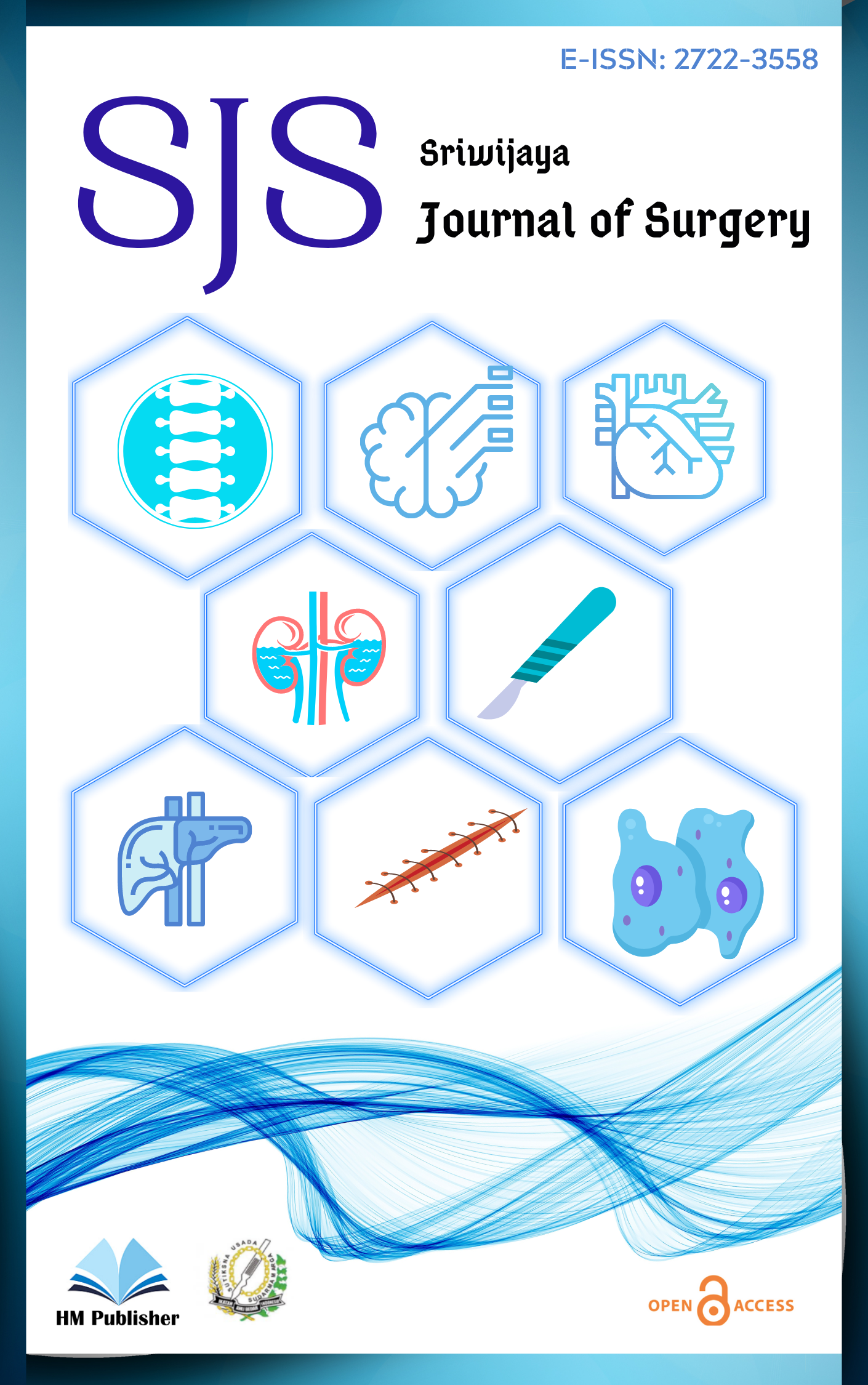Main Article Content
Abstract
Introduction: Acute subdural hematoma (ASDH) is a lethal form of traumatic brain injury (TBI) with high mortality. The Richmond Acute Subdural Hematoma (RASH) score is a simple prognostic tool, but its validity in diverse populations is untested. This study aimed to perform the first external validation of the RASH score in an Indonesian cohort and critically appraise its performance alongside key surgical factors.
Methods: We conducted a retrospective, single-center, diagnostic accuracy study of 67 adult patients who underwent surgery for traumatic ASDH between January 2022 and December 2024 at a tertiary neurosurgical center in Palembang, Indonesia. The RASH score was calculated from admission data. We additionally analyzed the type of surgery (craniotomy vs. decompressive craniectomy) and time from injury to operation. The primary outcome was in-hospital mortality. Receiver Operating Characteristic (ROC) curve analysis was used to evaluate the RASH score's predictive performance.
Results: The overall in-hospital mortality rate was 20.9% (n=14). The RASH score demonstrated excellent discrimination for mortality, with an Area Under the ROC Curve (AUC) of 0.824 (95% CI: 0.715–0.933; p<0.001). A score of 5 or greater was identified as the optimal cut-off, yielding a sensitivity of 78.6% and specificity of 77.4%. This threshold provided a high Negative Predictive Value (NPV) of 93.2% but a modest Positive Predictive Value (PPV) of 47.8%. In bivariate analysis, decompressive craniectomy and longer time to surgery were significantly associated with mortality.
Conclusion: The RASH score is a simple and robust tool for risk stratification in this selected surgical population. Its high NPV is valuable for identifying patients with a higher likelihood of survival. However, its utility must be interpreted cautiously due to the significant selection bias inherent in studying only operable patients. The score should serve as an adjunct to, not a replacement for, comprehensive clinical judgment.
Keywords
Article Details
1. Authors retain copyright and grant the journal right of first publication with the work simultaneously licensed under a Creative Commons Attribution License that allows others to share the work with an acknowledgement of the work's authorship and initial publication in this journal.
2.Authors are able to enter into separate, additional contractual arrangements for the non-exclusive distribution of the journal's published version of the work (e.g., post it to an institutional repository or publish it in a book), with an acknowledgement of its initial publication in this journal.
3.Authors are permitted and encouraged to post their work online (e.g., in institutional repositories or on their website) prior to and during the submission process, as it can lead to productive exchanges, as well as earlier and greater citation of published work.

